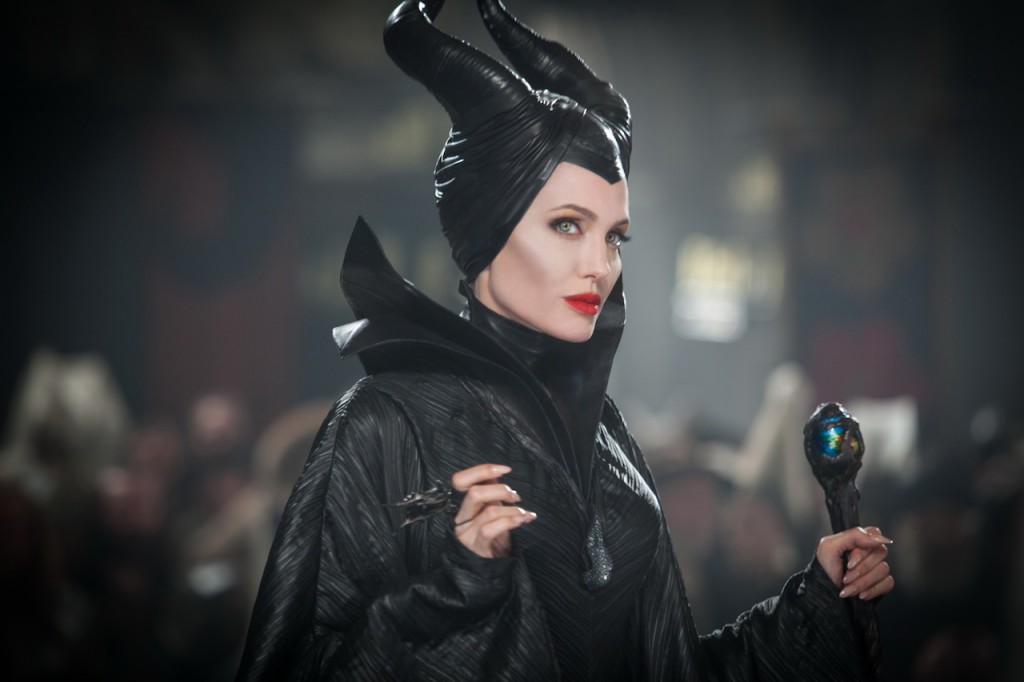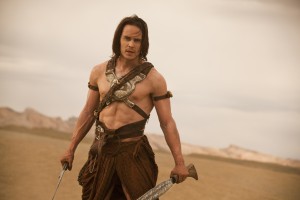Beneficent
A few times in these pages I’ve criticized the marketing departments of film studios for advertising films as the opposite of what they really are. There was 50/50, a movie about cancer that was sold as a comedy because Seth Rogan is in it and says a few funny things. August: Osage County was marketed as a dramatic comedy; it’s a tragedy that is occasionally funny and not always deliberately so. Those are relatively low budget bait-and-switches, however. I think the advertising campaign for expensive Disney blockbuster Maleficent is the biggest lie in quite some time. The billboards have all featured Angelina Jolie dressed as one of the most iconic screen villains of the last century – the evil fairy Maleficent from Disney’s 1959 Sleeping Beauty – and the commercials and trailers feature her sneering, battling armored armies, swooping through the sky with creepy wings. And Jolie is perfectly cast as an evil demoness. Her beauty is otherworldly, and her most famous roles, from her Oscar win as the dangerously crazy Lisa in Girl, Interrupted to the assassin in Mr. and Mrs. Smith, are fierce, violent antiheroes. Maleficent was sold to us as Sleeping Beauty from the perspective of the villain, with Jolie vamping about and camping it up. It’s not: It’s a complete rewrite of the fairy tale, in which our villain becomes the hero.
If you have fond childhood memories of Sleeping Beauty, forget them. In Maleficent, the story is structured by two neighboring kingdoms, one human ruled by a nasty king, the other peaceful and communal full of happy, magical creatures. One day, in the latter, a teen boy is caught trying to steal a jewel from the fairy kingdom, and a winged and horned teen girl save him from the anger of some tree creatures. The girl is Maleficent, and the boy is Stefan. They fall into a teen love before Stefan grows up to become an ambitious, vicious lapdog (crazy-eyed Sharlto Copley) to the king. One day, the king inexplicably decides to invade the fairy kingdom. Maleficent is now an adult and the protector of the realm. She and the tree warriors handily beat back the human army.
The king says that anyone who defeats her will be made his successor, so Stefan rekindles his romance with Maleficent as a trick. He drugs her and cuts off her wings and is made king. She’d not pleased and in her anger becomes, for about 20 minutes, the villain we were promised. She forcefully becomes queen of the other fairies and then, per Sleeping Beauty, curses Stefan’s baby daughter Aurora (an uncharacteristically vapid Elle Fanning): she will be pricked by a spindle on her 16th birthday and fall into a sleep that she can only be woken from by the kiss of true love. Stefan has three good fairies hide Aurora in the forest, but Maleficent and her werecrow henchman Diaval (Sam Riley) find them immediately.
And here’s where it all goes sideways. Spoiler: While spying on Aurora, Maleficent becomes enamored with the beautiful, sweet girl. She tries and fails to remove her own curse, and the final third of the film is a reformed Maleficent trying to save Aurora while battling the vengeful forces of Stefan. The plot hole is gaping here. If Maleficent just told Stefan she was trying to save his daughter from the curse, the whole final confrontation would have been moot.
I expected a great deal more from screenwriter Linda Woolverton, who also wrote the impeccable Beauty & the Beast and problematically racist but perfectly structured Lion King. Jolie only has a few snarky lines, and nothing really for even a low-rent drag queen to work with. I appreciate the feminist reconstruction of the story, making the central bond about mothering and sisterhood and not about a mythically perfect prince. But this was done much better in Brave and Frozen, and not at the expense of drama. Director Robert Stromberg, who won Oscars for the production design of Avatar and Alice in Wonderland, does a passable job with the action and a brilliant job with the visuals, even if the fairy kingdom does look a little too much like a magical Pandora.
Maleficent
Directed by Robert Stromberg
Written by Linda Woolverton
Starring Angelina Jolie, Elle Fanning, and Sharlto Copley
Rated PG
At your local multiplex
Unnecessarily in 3D

